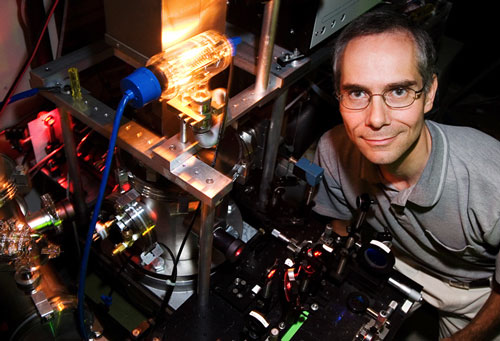The National Nanotechnology Directorate (NND), a unit under the Ministry of Science, Technology and Innovation (MOSTI), will set up a RM200 million NanoMalaysia Centre complex at Senai High Tech Park, Johor.
Jun 15th, 2011
Read more
The Institute of Microelectronics (IME), a research institute of the Agency for Science, Technology and Research (A*STAR) has launched its 11th Electronic Packaging Research Consortium (EPRC11) to address various technology challenges in advanced packaging technology in semiconductor in enabling smaller and smarter devices.
Jun 15th, 2011
Read more
The conference will offer critical learning opportunities in areas impacted by nanotechnology, such as nanobiotechnology and nanomedicine, energy and cleantech, MEMS and electronics, defense and aerospace, nanomanufacturing, and investment.
Jun 14th, 2011
Read more
 John A. Rogers, the Lee J. Flory-Founder Chair in Engineering at the University of Illinois, has won the 2011 Lemelson-MIT Prize. The annual award recognizes outstanding innovation and creativity.
John A. Rogers, the Lee J. Flory-Founder Chair in Engineering at the University of Illinois, has won the 2011 Lemelson-MIT Prize. The annual award recognizes outstanding innovation and creativity.
Jun 14th, 2011
Read more
 Using high-resolution imaging technology, University of Illinois researchers have answered a question that had confounded semiconductor researchers: Is amorphous silicon a glass? The answer? Yes - until hydrogen is added.
Using high-resolution imaging technology, University of Illinois researchers have answered a question that had confounded semiconductor researchers: Is amorphous silicon a glass? The answer? Yes - until hydrogen is added.
Jun 14th, 2011
Read more
Tiny fibres used to strengthen items such as bike frames and hockey sticks could pose risks to workers who make them.
Jun 14th, 2011
Read more
Researchers have introduced a new approach to hydrogen storage that is based on simple salts of formic acid and carbonic acid.
Jun 14th, 2011
Read more
Nanoparticles of the right dimensions and shape may be the key in combating the plaque that destroys neurons and leads to symptoms associated with Alzheimer's disease, a new report shows.
Jun 14th, 2011
Read more
 Rice University researchers have determined that a lattice of calcium-decorated carbyne has the potential to store hydrogen at levels that easily exceed Department of Energy (DOE) goals for use as a "green" alternative fuel for vehicles.
Rice University researchers have determined that a lattice of calcium-decorated carbyne has the potential to store hydrogen at levels that easily exceed Department of Energy (DOE) goals for use as a "green" alternative fuel for vehicles.
Jun 14th, 2011
Read more
The simulation modelled the behaviour of 110 billion atoms at an unprecedented 1.87petaflops of performance. The previous record for a simulation of this kind was 49 billion atoms at 369 teraflops of performance.
Jun 14th, 2011
Read more
MIT researchers provide a simple principle to predict which materials will perform best in fuel cells and metal air batteries.
Jun 14th, 2011
Read more
The new classifications to address the growing use of nanotechnology are Nanomaterial Distributors and Nanomaterial Manufacturing. The Nanomaterial Distributors classification applies to risks that sell nanomaterials to others, and the Nanomaterial Manufacturing classification applies to risks that manufacture or engineer nanomaterials for others.
Jun 13th, 2011
Read more
The U.S. Food and Drug Administration (FDA) has approved the first clinical trial in humans of a new technology: Cornell Dots, brightly glowing nanoparticles that can light up cancer cells in PET-optical imaging.
Jun 13th, 2011
Read more
Research groups in several countries are making progress in retinal prosthesis development. If they achieve their aims, patients who have gone blind, due to loss of their photoreceptors, could recover a better simplified form of vision than with available prostheses. One of the groups shows that diamonds could lead the way.
Jun 13th, 2011
Read more
In one of the biggest nano-related public engagement exercises ever implemented, the Institute of Nanotechnology has now published online surveys in seven languages and is launching focus groups as part of the EC-funded NANOCHANNELS project.
Jun 13th, 2011
Read more
The National Nanotechnology Center (NANOTEC) recently entered into a strategic partnership with Thai Industrial Standards Institute to promote insight to nanotechnology and how it impact to industry standards and certifications.
Jun 13th, 2011
Read more




 Subscribe to our Nanotechnology News feed
Subscribe to our Nanotechnology News feed